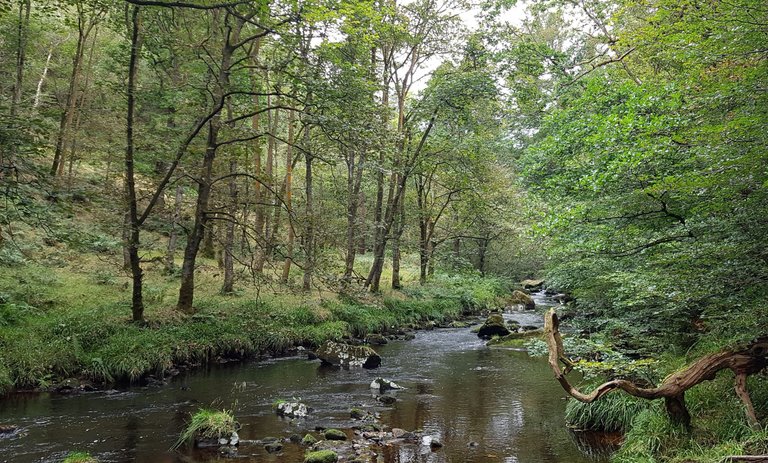 Picture taken by me on holiday in Yorkshire.
Picture taken by me on holiday in Yorkshire.
Foraging on hands and knees,
braving woodlice and nipping ice
to find a perfect twig.
Not too big to drag but stout enough
to drop fast and sure without sinking deep.
Leaning over metal railings,
twig gripped in icicle fingers,
the river a swollen
swirling winter maelstrom -
bleached grey reflecting clouds,
exhaling winter’s joy
of renewal from decay.
Waiting for that perfect moment -
to let loose the knobbly bough.
A mad dash across the bridge,
eyes wide fixed on the torrent
in bubbling troubled anticipation.
Waiting and wondering,
Was my stick too heavy?
Shouting in triumph
as a stick shoots forth
into the slick morning light,
speeding away towards
a horizon of hills
and smoke drifting
from the stack's of mills.


Pooh Sticks is a children's game (although you can play it as an adult 😉) made popular by the stories of Winnie-the-Pooh written by A. A. Milne.
To play pooh sticks, you and a friend find a twig, drop it in a stream on one side of a bridge, then run to the other side to see who's twig emerges first. The first twig out is the winner! It is, therefor, very important to pick the right twig, with the right shape to allow fluid flow through the water... and to each find twigs with defining features.
There's a little insight into the mind of a 5 year old me. I used to have a whole system for picking the best stick to win the race. It was a simple formula, taking into account weight, shape and aerodynamic properties... surface area was also a big factor in picking the perfect pooh stick 😂
It fascinates me how these types of memories take up a little space in our hearts. A warm fuzzy spot glimpsed through rose tinted glasses called nostalgia. Which is what this poem is all about; that feeling of overwhelming enthusiasm for simple joys that fades moving into adulthood. Sure we reinvent this joy of play into hobbies and obsessions - like the guy who obsessively polishes his classic car, only to drive it once a month - but it's never quite the same. It's a facsimile of play. This is what I tried to reconnect with in writing this poem. That spirit of play.
As many kids (of my generation at least) played this game, I hoped it might strike a universal chord in many. I tried to keep the poem purposefully understated in the use of description to allow for the reader to come to a discovery; a recognition of the game that they also used to play as a child. This is the root of all good creative writing, the age old adage - show don't tell.
The poem is written in free verse form, and so doesn't follow a strict 'end of line' rhyme structure. But if you look carefully you will see examples of internal rhyme and assonance that create the structure of the poem in the absence of 'end of line' rhymes.
Examples of internal rhyme:
braving wood-lice and nipping ice
bleached grey reflecting clouds,
exhaling winter’s joy
of renewal from decay.
Examples of assonance:
horizon of hills
bubbling troubled
swollen swirling winter maelstrom
These structures within the lines of the poem are what help create the metre and style in free form poetry.
Although less well known outside of literary circles, it is free form poetry that is at the forefront of modern poetry - the beating heart of the evolving art.
After all, if we always continue to look backwards, how will we continue to evolve?
As it is with life, so it is with poetry.
I hope you have enjoyed this little delve into the inner-child, and that the poem has perhaps inspired memories of playing childhood games for Hivians across the world.




